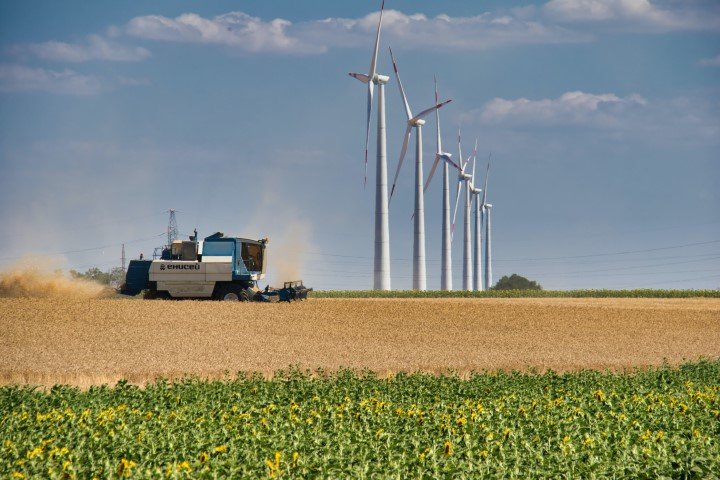INTERNET OF THINGS (IoT) - THE FUTURE OF AGRICULTURE

The Internet of Things (IoT) is a system of interrelated and interconnected devices that are provided with unique identifiers (UIDs) and can transfer data over a network without requiring human-to-human or human-to-computer interaction. The thing in the IoT can be a person with a smartwatch capturing his/her vitals on a real-time basis, a farm animal with a biochip embedded collar transponder, an automobile that has built-in sensors to monitor and share speed, tire pressure, fuel levels or other parameters through telemetry and/or any other natural or man-made object that can be assigned an Internet Protocol (IP) address and can transfer data over a network.
IoT broadly is every object that can relay information when connected to a network.
The concept of the "Internet of Things" and the term first appeared in a speech by Peter T. Lewis to the Congressional Black Caucus Foundation 15th Annual Legislative Weekend in Washington, D.C, published in September 1985. According to him, "The Internet of Things, or IoT, is the integration of people, processes and technology with connectable devices and sensors to enable remote monitoring, status, manipulation, and evaluation of trends of such devices. The term "Internet of things" was also coined independently by Kevin Ashton of Procter & Gamble in 1999. He viewed radio-frequency identification (RFID) as essential to the Internet of Things, allowing computers to manage all individual things.
Why IoT in Agriculture?
If there is one sector that we all as the human race really need to become more efficient and prosperous using all the possible technologies such as IoT, it’s the Agriculture sector. There is an exponential growth in world population, according to the UN Food and Agriculture Organization, the world will need to produce 70% more food in 2050. Feeding the world is directly connected with how prosperous and peaceful we are as societies as well as nations.

The increasing demand for food along with shrinking agricultural lands, and depletion of finite natural resources such as freshwater, has made the need to enhance farm yield critical. Further, the slowing yield trends in several staple crops and the negative impact of climate change have further aggravated the problem. Another impending concern over the agriculture sector is the shifting structure of the workforce. the productive agricultural labor in most countries has declined due to labor moving out of agriculture and aging agriculture labor.

As a result of the factors above, the adoption of IoT in farming has been triggered. IoT solutions are focused on helping farmers close the supply-demand gap, by ensuring high yields, profitability, and protection of the environment.

The approach of using IoT technology to ensure optimum application of resources to achieve high crop yields and reduce operational costs is called precision or smart agriculture. IoT in agriculture technologies comprises specialized equipment, wireless connectivity, software, and IT services. The adoption of IoT devices in the agriculture industry reached 75 million in 2020, growing 20% annually.

The adoption hence the market potential of IoT in agriculture depends on various factors prevalent in a country/region.

Each country/market has its own nuance hence we will see the pace of adoption varies in different regions

IoT is a great opportunity for the world to tackle challenges that the rising population and climate changes are posing to the future not so far from today.
How is IoT used in Agriculture?
Today's agrifood systems are complex with data created, collected, and used across multiple organizations. Data from humble farmer's farm to historic cross border commodity transactional data to satellite-based NDVI to inventory at a point of sales the explosion of data in the agrifood system is unprecedented. The key to harnessing this data is to produce more food, more efficiently in the current complex agrifood system.

IoT is used in agriculture through the use of robots, drones, sensors, and computer imaging integrated with analytical tools for getting insights and monitoring the farms.


Placement of physical equipment on the farm monitors and records data which is processed to get insights using other advanced technologies including Artificial Intelligence, Machine Learning, and Deep Learning. When integrated with other supply chain and traceability technologies like blockchain it provides a truly sustainable agrifood system.

IoT enables growers and farmers to reduce waste and enhance productivity ranging from the quantity of fertilizer utilized to the amount of water used for irrigating a field. It further ensures that the farm produce is transported in the most optimal and transparent manner. Last but not least it ensures that both the upstream and downstream of farm, value-chains are sustainable and efficient.
IoT applications in Agriculture.
There are four broad areas of application of IoT in agriculture, Sensing & Monitoring, Analysis & Planning, Control & Automation, and Logistics & Traceability.

Implementing IoT in Agriculture
While IoT has a huge potential to create a better future for agriculture, however, there are various technology, regulatory and business challenges that need to be addressed.

Path to adoption and scaling IoT applications in Agriculture
Going forward for any county/market to adopt and scale IoT in agriculture and harvest IoT's true potential it needs a holistic approach.

IoT, if implemented successfully in agriculture, can lead to $500 billion in additional value to the global gross domestic product by 2030.
National AgriStack is the need of the hour as it will enable the reduction of redundancy of information collection and reduce the cost of agriculture data collection and efficient usage. It needs a multi-stakeholder approach.





